Genetic Testing and Health Clearances in Labradors: What do all of these results mean?
By this point you’ve probably read through various breeder websites, trying to educate yourself on the breed, finding a puppy, and what makes a good breeder. You’ve read over countless acronyms like OFA, EIC, PRA, CNM, TVD, and the list goes on… what do all of these things mean? What is important to test for? And most importantly, what does it all mean for your puppy?
So let’s start with the basics. “Back in the day”, we all knew to at a minimum x-ray hips and check eyes before breeding our Labradors. The OFA (Orthopedic Foundation for Animals- https://www.ofa.org/) works as a database for orthopedic health clearances, along with others. You’ll see clearances for hips, elbows, eyes, and hearts that look similar to the one below.
Hips are graded on a multi-level grade system. From the highest to lowest: Excellent hip joint conformation, Good hip joint conformation, Fair hip joint conformation, Borderline hip joint conformation, Mild hip dysplasia, Moderate hip dysplasia, or Severe hip dysplasia. Elbows are either negative for any issues (or noted normal), or have some grade level of dysplasia or other issue. Below is a portion of an OFA hip and elbow preliminary report which details the different grades.
What you’ll see from a reputable breeder are primarily good and excellent hip ratings on all of their breeding stock. Once in a while there may be a fair rating if bred to an excellent rating, and if that dog is otherwise outstanding in every other way. The thing that people don’t know is that these grades can be swayed based on positioning. If a dog is positioned improperly during their x-ray, it can make the hips look worse than they actually are (though they cannot be made to look better than they are). If at all possible, x-rays without sedation are preferable. Preliminary OFA x-rays can be done before 24 months, but will not be considered final. Though the final doesn’t tend to stray too far from the preliminary unless there is an injury or if the preliminary is done on the younger side. After 18-20 months, the joints will not likely change much. This is also why we recommend waiting to spay or neuter your dog until they are 18-24 months, to allow the growth plates to close and for complete growth and proper development.
It’s important to certify the hips and elbows of any potential breeding dog in order to decrease the chances for hip and elbow dyplasia in its offspring. It should be noted, however, that this does not eliminate the risk, it only minimizes it. A dysplastic dog could still come from two parents with good or excellent hip ratings. Elbows are especially less predictable, as there is no rating of good, better, best, etc. There are normal elbows, and elbows with some degree of a problem. So seeing elbow dysplasia in a dog from two parents with normal elbows is certainly possible. Hip and elbow dysplasia have genetic components, for sure, but there are also environmental and outside factors that can influence the potential for dysplasia. You can read more about this here: HIP DYSPLASIA IN LABRADORS: WHAT CAN I DO TO PREVENT IT?
Still, we do offer a hip and elbow guarantee in our puppies, which you will get a copy of when reserving your puppy (or if simply requested when chatting with us!).
OFA Hips and Elbows are considered the bare minimum to be completed before breeding, but there’s much more than that. We also have a canine ophthalmologist and cardiologist examine the dog’s eyes and heart and complete an OFA exam application to certify that they don’t have any congenital or hereditary defects. With the eyes, you can see things like cataracts and retinal folds. This certification used to be called a CERF exam (and most breeders still call it that verbally) but now is titled the Companion Animal Eye Registry (CAER) form and is certified by and filed with the OFA database. With regard to cardio issues, the doctor could detect heart murmurs or other heart defects. TVD (Tricuspid Valve Dysplasia) is a sadly common heart defect in this breed that is important to check for. It can range from mild to severe in its nature and the treatment varies. A dog with any degree of TVD should obviously not be bred, as they would have the tendency to reproduce puppies with this issue. Though again, just like with hips and elbows, both eyes and hearts develop structurally in each individual dog, and it’s impossible to rule out the chances of defects. We can only minimize the chances by breeding two parents with cleared/certified eyes and hearts.
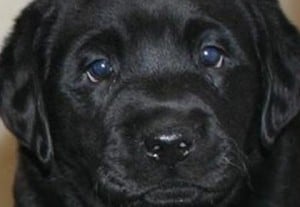
Cute picture of puppy dog eyes to break up the text, and compliment the explanation of the eye clearance!
Ok, moving on! So we’ve covered OFA hips, elbows, eyes, and heart clearances, and consequently discussed how these clearances help influence the predisposition of correlating issues in a dog’s offspring, but not determine them fully. The further genetic testing that we are able to do now, is for various diseases that are common in the breed, and are solely determined by genes. We can do blood testing, or now cheek swabs, to find out if a dog carries the gene for each disease.
This panel of diseases includes:
Centronuclear Myopathy
Aliases: Hereditary myopathy of the Labrador Retriever, Type II muscle fiber deficiency, CNM
Degenerative Myelopathy
Aliases: Canine degenerative myelopathy, DM
Exercise-Induced Collapse
Aliases: EIC
Hereditary Nasal Parakeratosis
Aliases: HNPK
Macular Corneal Dystrophy (Labrador Retriever Type)
Aliases: MCD
Progressive Retinal Atrophy, Progressive Rod-Cone Degeneration
Aliases: PRA-PRCD, PRCD
Retinal Dysplasia/Oculoskeletal Dysplasia 1
Aliases: Dwarfism with retinal dysplasia 1, Inherited retinal dysplasia, Oculoskeletal dysplasia 1, Retinal dysplasia, DRD1, OSD1, RD, RD/OSD
Skeletal Dysplasia 2
Aliases: Dwarfism, SD2
(Feel free to research these diseases, as it would make a very long post here for me to go into detail on each of them!)
We’ve been lucky to only have the occasional carrier of PRA, EIC, or HNPK. When that happens, that dog’s breeding pool is minimized to counterpart who has been cleared of that disease. If two carriers are bred together, then their offspring run the risk of being affected by the disease they carry. But if one carrier is bred to a cleared dog, then there is zero chance of the offspring being affected, as they have to receive the gene for the disease from each parent. Some of their offspring could be carriers, but that doesn’t affect the health of the dog, only its breeding candidates.
Hopefully this has helped you understand all of those clearances and results that you are reading under each breeding candidate as you search for a new puppy, and how they affect your potential puppy! 🙂 We wish you luck in your search!

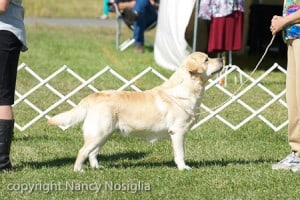
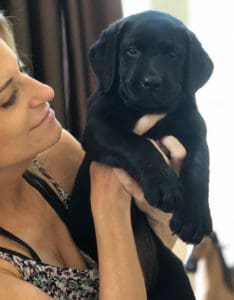
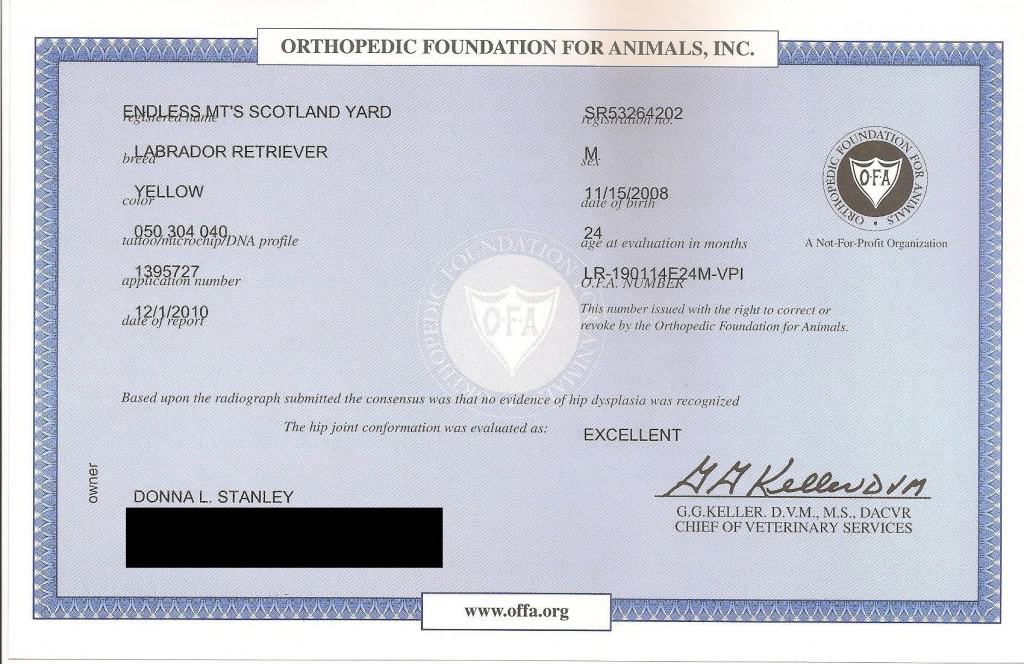
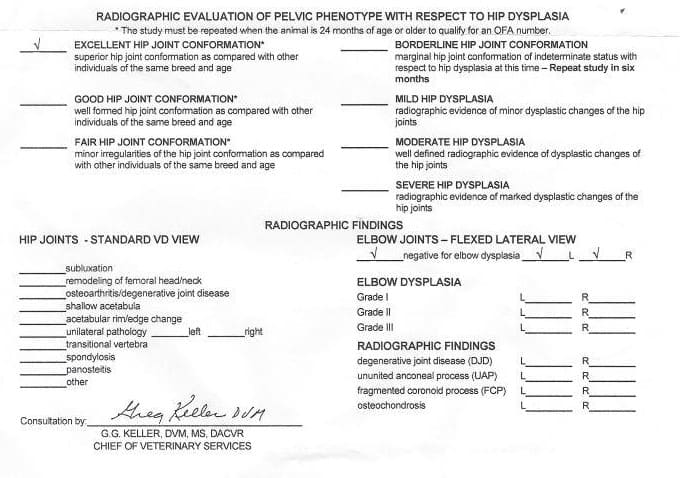
789 Comments